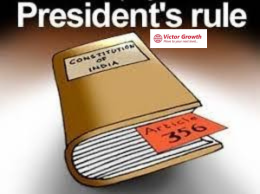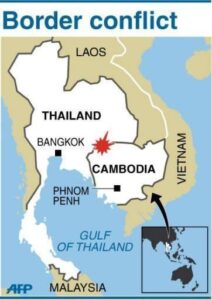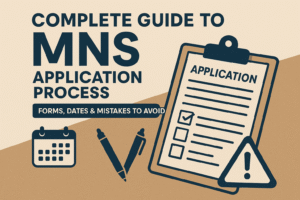Introduction
The Indian Constitution provides for three types of emergencies: National Emergency (Article 352), State Emergency (Article 356), and Financial Emergency (Article 360). Among these, the State Emergency, commonly referred to as Presidential Rule, is imposed under Article 356 when the constitutional machinery in a state fails. This provision enables the central government to take direct control of a state’s administration, effectively suspending the authority of the elected state government.
Why This Provision Exists in the Indian Constitution
Article 356 was incorporated into the Indian Constitution to ensure governance in states does not collapse due to political instability, rebellion, or failure to comply with constitutional provisions. This provision was borrowed from Section 93 of the Government of India Act, 1935, which allowed the British Governor-General to assume control of a province during emergencies.
The framers of the Constitution envisioned Article 356 as a safeguard to uphold democracy and constitutional order rather than as a political tool. However, it has often been criticized for being misused by ruling central governments.
Instances of State Emergency in India
Since independence, Article 356 has been invoked multiple times, some notable instances being:
1951 – Punjab: The first instance of Presidential Rule in India when the state government was dissolved.
1959 – Kerala: Imposed on Kerala’s first Communist government led by E.M.S. Namboodiripad, dismissed by the Nehru-led central government.
1977 – Several States: Following the Emergency (1975-77), the Janata Party government dismissed several Congress-ruled state governments.
1989 – Karnataka: Imposed when the S.R. Bommai government was dismissed, leading to a landmark Supreme Court judgment on misuse of Article 356.
1992 – Uttar Pradesh: Imposed following the Babri Masjid demolition.
2016 – Uttarakhand & Arunachal Pradesh: Imposed due to political instability.
Reasons for Imposing State Emergency
The main reasons why the President’s Rule is imposed include:
Failure of Constitutional Machinery: If the Governor of a state reports that the government cannot function as per constitutional provisions.
Breakdown of Law and Order: If the state experiences riots, communal violence, or extreme instability.
Political Uncertainty: If no party or coalition can form a stable government.
Corruption or Misgovernance: If the state government is involved in unconstitutional activities.
Rebellion or Secessionist Movements: If insurgency or separatist demands threaten national integrity.
Implications of State Emergency
When Article 356 is invoked:
The President assumes the executive powers of the state.
The Governor acts as the representative of the central government.
The State Legislative Assembly is dissolved or suspended.
The Parliament enacts laws for the state.
Fund allocations and governance decisions are taken by the central government.
Extension Beyond One Year
Initially, Presidential Rule can be imposed for six months. It can be extended up to three years, but beyond one year, it requires:
Approval every six months by Parliament.
A National Emergency (Article 352) in force in the country or that particular state.
Election Commission certifying that elections cannot be held due to exceptional circumstances.
Criticism of State Emergency
Despite its necessity, Article 356 has faced several criticisms:
Political Misuse: Often used by ruling parties at the Centre to dismiss opposition-led state governments.
Undermines Federalism: Violates the spirit of federalism by centralizing power.
Vague Grounds for Imposition: Lack of clear criteria allows subjective interpretations.
Supreme Court’s Check: The S.R. Bommai case (1994) placed restrictions on its misuse, stating that such dismissals must be justified and can be challenged in court.
Conclusion
While Article 356 is a constitutional safeguard to maintain governance, it has been misused in the past for political gains. Judicial interventions and constitutional amendments have sought to curb such misuse. A balance between state autonomy and central oversight remains crucial for the federal structure of India.
Understanding Presidential Rule is vital for comprehending the delicate balance between democracy and governance in India. It remains an important provision but should be used judiciously to maintain democratic integrity.






